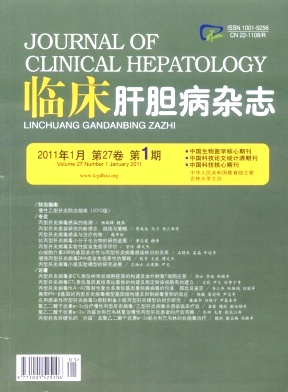|
[1]Bosma PJ, Chowdhury JR, Bakker C, et al.The geneticbasis of the reduced expression of bilirubin UDP-glucuronosyltransferase 1 in Gilbert’s syndrome[J].NEngl J Med, 1995, 333 (18) :1171-1175.
|
|
[2]Hsieh TY, Shiu TY, Huang SM, et al.Molecularpathogenesis of Gilbert's syndrome:decreased TATA-binding protein binding affinity of UGT1A1 genepromoter[J].Pharmacogenet Genomics, 2007, 17 (4) :229-236.
|
|
[3]Shabana F, Sanghamitra S, Amal S, et al.Gilbert’ssyndrome:High Frequency of the (TA) 7TAA allele in Indiaand its interaction with a novel CAT insertion in promoterof bilirubin UDP-glucuronosyltransferase 1 gene[J].World J Gastroenterol, 2006, 12 (14) :2269-2275.
|
|
[4]Burchell B, Hume R.Molecular genetic basis ofGilbert’s syndrome[J].J Gastroenterol Hepatol, 1999, 14 (10) :960-966.
|
|
[5]Maruo Y, D’Addario C, Mori A, et al.Two linkedpolymorphic mutations (A (TA) 7TAA and T-3279G) ofUGT1A1 as the principal cause of Gilbert syndrome[J].Hum Genet, 2004, 115 (6) :525-526.
|
|
[6]Milan J, Jan P, Libor V.Linkage between A (TA) 7TAAand 3279T/G mutations in UGT1A1 is not essential forpathogenesis of Gilbert syndrome[J].Liver Int, 2006, 26 (10) :1302-1303.
|
|
[7]Eílsio C.Hematologically important mutations:BilirubinUDP-glucuronosyltransferase gene mutations in Gilbertand Crigler-Najjar syndromes[J].Blood Cells Mol Dis, 2006, 36 (1) :77-80.
|
|
[8]Natalija M, Daria P, Branka G, et al.GenotypeFrequencies of UDP-Glucuronosyltransferase 1A1Promoter Gene Polymorphism in the Population ofHealthy Croatian Pre-Scholars[J].Coll Antropol, 2008, 32 (3) :725-729.
|
|
[9]Aspasia T, Maria T, Eirini G, et al.Gilbert Syndrome as aPredisposing Factor for Cholelithiasis Risk in the GreekAdult Population[J].Genet Test Mol Biomarkers, 2009, 13 (1) :143-146.
|
|
[10]Hermann E W, Hildegard K, Ulrike H, et al.Coinheritanceof Gilbert Syndrome-Associated UGT1A1 MutationIncreases Gallstone Risk in Cystic Fibrosis[J].Hepatology, 2006, 43 (4) :738-741.
|
|
[11]Tapan S, Dogro T, Tasci I, et al.Soluble CD40 ligand andsoluble P-selectin levels in Gilbert’s syndrome:A linkto protection against atherosclerosis?[J].Clin Biochem, 2009, 42 (9) :791-795.
|
|
[12]Kalousova M, Novotny L, Zima T, et al.Decreased levelsof advanced glycation end-products in patients withGilbert syndrome[J].Cell Mol Biol (Noisy-le-grand) , 2005, 51 (4) :387-92.
|
|
[13]Gershon K, Alex M.Gilbert Syndrome Presenting In aYoung Boy, Confirmed by the Rifampin Test[J].Isr MedAssoc J, 2007, 9 (10) :626-627.
|
|
[14]Gorski J C, Vannaprasaht S, Hamman M A, et al.Theeffect of age, sex, and rifampin administration onintestinal and hepatic cytochrome P450 3A activity[J].Clin Pharmacol Ther, 2003, 74 (3) :275-287.
|
|
[15]Hallal H, Egea JM, Mas P, et al.A shortened, 2-hourrifampin test:a useful tool in Gilbert's syndrome[J].JGastroenterol Hepatol, 2006, 29 (2) :63-65.
|
|
[16]Niels T, Inken L, Jonas R, et al.The inverse starvingtest is not a suitable provocation test for Gilbert'ssyndrome[J].BMC Research Notes, 2008, 1 (1) :35.
|
|
[17]Ewa E, Martin W, Frank L, et al.Successful treatment ofsevere unconjugated hyperbilirubinemia via induction ofUGT1A1 by rifampicin[J].J Hepatol, 2006, 44 (1) :243-245.
|







 DownLoad:
DownLoad: